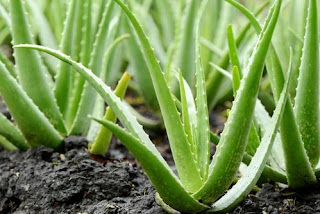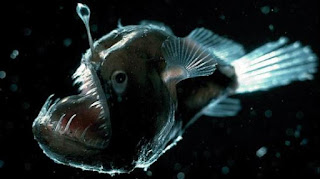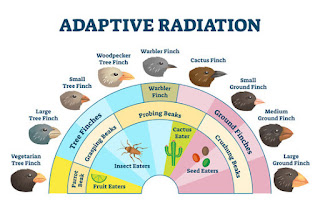Ecosystems
Let us discuss these questions
What is a habitat?
Is a tree habitat only for a crow?
In what way an ecosystem is different
from habitat?
We found that there were differences
between the ecosystems of land and water
and different ecosystems on land and water
as well. We can see differences within
ecosystems in very small areas as well.
We have studied in the chapter 'habitat' about
the variations in the living
communities, as well as organisms
present at different levels, in the pond
ecosystem and the tree. In this chapter we
will see how organisms have started
inhabiting certain areas, what needs they
have and how they acquire different
conditions from their surroundings to meet
them.
Mangroves
To adjust themselves to diverse and
distinct changes in ecosystems, organisms
have to adapt different means for better
survival. For example, some trees such as
Mangroves like Avicennia have evolved a
curious way to deal with the problems of
growing in a wet and salty place. They have
evolved to have curious looking
These “knees” (aerial roots) develop
from the lateral roots that are growing near
the surface, and protrude up to 12 inches
out of the soil or sediment. The precise
function of these “knees” is not definitely
known, but there is general agreement that
they aid the plants in maintaining adequate
root respiration in a watery environment.
We do not find such structures in plants
growing around us.
All such ways and means that organisms
adopt or develop over a certain period of
time in different conditions for better
survival are adaptations of organisms. We
may also say that adaptation is a feature that
is common in any population because it
provides some improvements for better
survival.
Activity-1:
Take a Aloevera and a
Balsam plant in two separate pots. Water
each of them with two tablespoons of water.
Do not water them for a week. Observe
the condition of the plants after a week.
Which plant showed growth?
Which plant dried first? Why?
Activity-2:
Collect an aquatic plant out of a water
body( Eg. Duck weed, Hydrilla, Vallisneria
etc. either floating at the surface or
propping out of it). Carry it back home and
plant it in a pot and water it.
What do you observe? Compare
your observation with that of
activity1 and write a note on what
you find.
From the above activity we see that
some plants dry up without water very
quickly, while others can grow even with
very little water. Each of these plants are
adapted to the conditions in their
surroundings on the basis of need of water.
What is meant by adaptations?
Describe your opinion.
Organisms in nature create adaptable
situations around them on the basis of their
needs. They also adapt to situations
specifically. For example in Opuntia, the
leaves are reduced to spines so that
transpiration loss is checked and water is
stored in the tissues of the stem (succulent
stems). This helps the plant to live in
conditions of water scarcity as we come
across, in deserts. Aloe vera are found in
our surroundings these days as well but you
may have heard that they are generally called
as desert plants (xerophytes).
Opuntia
Baobab
Cactus
Though these are called Living stones they are not stones. The
swollen leaves are adapted to desert conditions, minimizing water
loss and storingwater. These are also called Pebble Plants . Each pebble is actually a leaf with a cut window that lets in light. The stone like appearance deceives the animals and saves it from being eaten. Now a days, many Xerophytes aregrown as ornamental plants in pots at homes. Some plants as a whole seem to be flowers. Some with thorns, some have flowers with bright colour petals. Now a
days these kind of plants are used as gifts for Birthdays and other occasions also.
Pebble plant
Adaptations in some more desert animals
The Side-Winder adder snake crawls
sideways with only a small amount of its
body pressed against the hot sand. This
technique helps it to keep itself cool. The
Golden Mole escapes the heat of the sun
by swimming through the sand just below
the surface. It rarely emerges out as it finds
all the needs below the ground
Some animals show extraordinary
ability to survive in the desert. The
Kangaroo Rat of western North American
desert can live without drinking water
through out its life. Because its body
synthesizes little water in the process of
digestion. The desert bird the Sand grouse
flies long distances to an oasis in search
of water, which it carries back in its crop
for its nestlings.
The furry soles of Fennec Fox helps it
walk on hot sand and loses heat through its
ears. When the sand becomes too hot the
sand diving lizard holds its feet in the air to
cool down.
Rattle snake
Sandgrouse
Adaptations in Aquatic ecosystems:
We shall study two different types of
ecosystems in water (aquatic ecosystems)
and some conditions in the environment that
influence adaptations.
Aquatic ecosystems are mainly
classified into two different types as Fresh
water and Marine ecosystems.
Ponds, Lakes, Rivers are the examples
of Fresh water Ecosystems
Seas, Oceans are the examples of
Marine Ecosystems
As the living conditions are different
we come across various adaptations in
several organisms living in these ecosystems.
General aquatic adaptation as can be
seen structurally (in body structure) are
like presence of some special air spaces
inside bodies or presence of such
substances that help organisms to swim and
float in water to inhabit different levels in
the water body, or bear specialized
structures to swim like flippers as in Turtles
and fins in fishes. Fishes, Dolphins etc have
floaters in their body (special structures of
their digestive canals) to be able to inhabit
particular levels in the water body.
Microscopic photosynthetic organisms
like planktons have droplets of oil in their
cells that keeps them float. Larger plants
have long tough leaves and flexible stems.
Marine ecosystem:
Over the last 2,000 million years, plant
and animal life on earth has continuously
evolved from its simple beginnings in the
oceans to the complex existence on land
today. It is no accident that protoplasm, a
substance found in every living cell,
strongly resembles seawater. Although
some animals emerged from the sea
millions of years ago to fill all available
places on land, some remained in the ocean
and evolved and adapted to life beneath the
surface.
The ocean covers a larger part of the
planet, yet it remains a little understood
place as scientists have limited scope for
the study of habitats that lack physical
boundaries and a span of thousands of
miles.
Adaptations on the basis of light
penetration:
Euphotic zone
The organisms living in this zone are
mostly floaters and swimmers. Animals in
this zone usually have shiny bodies
reflecting light away to merge with shiny
water surface are transparent. These usually
have very sharp vision. Plants are mostly
green and photosynthetic activity is
maximum in this zone. Some flora and
fauna of this zone are trouts, herrings,
dolphins, jelly fishes, different type of coral
colonies which are extremely colourful,
different types of algae & sea grasses
(emergent plant species: rooted to the
sides, in marine ecosystems these are
rooted in the continental shelf area)
diatoms etc. Nearly 80% of marine flora
and fauna are found in this zone.
Coral colonies
Bathyal zone:
Most of the plants found in this zone
are the red and brown kelps, sponges, corals
even animals with tubular bodies like
squids and large animals like whales etc.
Some of these have a flat body like the ray
fishes. They may have big eyes sensitive to
very dim light
Ray fish
Abyssal zone:
These zones are
dark and cold
throughout the year.
Photosynthetic activity
is absent. Deep sea
animals are mostly
predators and
scavengers. The larger
forms have wide
mouths and huge curved teeth which prevent
escape of any prey. Absence of skeleton,
flattened bodies are some other
characteristics observed. Some also have
special structures that produce light on their
bellies, around their eyes(which are usually
nonfunctional that is, the organisms are
blind) and at the sides of their bodies, some
animals glow (shows bio luminiscence) in
the darkness of deep waters
Angular fish
Brittle Star
Freshwater Ecosystems:
Fresh water ecosystems are stagnant water types as well as running water types. They may vary in size from as small as a puddle and pond to a large lake, river etc. Just like the marine ecosystems, to
study environmental conditions in lakes, some zones are marked. The Littoral zone, Limnetic zone and Profundal zones on the
basis of light penetration. Based on availability of light different kinds of organisms are found in these zones. Different factors like light, salt content, food, oxygen affect the organisms and their
populations in different ways.
Littoral zone: The shallow zone near
the shore is also called as littoral zone. The
water near the shore is usually muddy or
turbid. This topmost and warmest zone at
the edge of a water body is home to Snails,
Clams, Insects, several Crustaceans, Fishes
and Amphibians and the eggs and larvae of
Dragonflies etc.
Several organisms in this zone have
well developed sight, usually have dull and
greyish bodies and are fast swimmers.
Plants like Mosses, Water lily, Vallisneria,
Hydrilla etc are found here along with
several types of algae. High photosynthetic
activity occurs in this zone. Predators of
this zone are Tortoise, Snakes and Ducks.
The limnetic zone is the open water
zone at the top of the water body and
consequently receives a good deal of light.
This zone contains a variety of freshwater
fish with bright shiny, greyish or silver
black scales that help them to merge with
the surroundings. Transparent or whitish
bodied crustaceans like Daphnia, Cyclops,
small Shrimps are also found in this zone.
There are different types of floating plants
like Water hyacinth, Wolffia, Pistia along
with a variety of algae.
The profundal zone is dimly lit and
cold. Mostly heterotrophs (saprochytes -
microbes that decompose dead organisms)
are found in this region. Most of the
animals, the so called bottom dwellers, that
live here are mostly scavengers and
predators, for example Crustaceans, Crabs,
Fishes like Eels and Glossogobius (isika
dondu), Snails, Turtles etc. They adapt
themselves by feeding on dead animals that
settle down. Many kinds of bacteria
(detritus) thrive here that help in
decomposing the dead organisms. Mud of
the bottom floor, tiny particles of dead and
decaying matter of plants and animal bodies
make the water very turbid. Hence the
bottom dwellers , rely mostly on smell and
auditory (related to hearing) senses rather
than vision to aquire their food.
Adaptations in some aquatic plants
Partially submerged plants have
numerous air spaces inside the stems
,leaves ,roots that aid in gaseous exchange
and buoyancy. Leaf bases of Water Hyacinth
(Eichhornia crassipes) form air filled
structures to keep them afloat. In water
lilies leaves are flat, have an oily surface
with stomata present on the upper surface
of the leaf, while incompletely submerged
plants like Hydrilla, stomata are absent,
leaves are thin, stems are highly flexible.
The main adaptations that give Hydrilla an
advantage over other native plants are: it
can grow at low light intensities, it is better
at absorbing carbon dioxide from the water
(diffuses into leaves), it is able to store
nutrients for later use, it can tolerate a wide
range of water quality conditions for
example salinity(can grow in saline waters
as well), and it can propagate sexually and
asexually.
Other examples of adaptations
Adaptation to temperature in plants
The effect of temperature on plants of terrestrial ecosystem can be seen in different ways. Do all plants shed their leaves at
same time in a year throughout the world. Some plants in
temperate regions shed their leaves before the winter starts. This is to minimize transpiration loss as well as reduce photosynthetic and other metabolic activities, as low temperature renders several chemicals inactive for some time. In tropical regions some plants
shed their leaves before the start of summer. Plants growing in hot climates, usually keep the stomata closed during the
day to reduce transpiration loss. High
temperatures also lead to adaptations like
reduced leaf.
Let us recall why xerophytic plants have
modified stems and leaves.
Adaptive Radiation in Galapagos Finches
Try to guess if there is any relation between type of food taken and the structure of beak. The seed eaters had thick and heavy
beaks. The fruit eaters had stubby beaks. The insect eaters had sharp and long beaks. . Darwin observed that these birds had adapted to their immediate surrounding for food and shelter and showed a lot of
variation even within the same species, especially with respect to the form of beaks. He made a sketch of the same as shown in the above. Thus he concluded that adaptation was something that an organism is undergoing continuously, even within very closely related forms in a particularly geographically separated area.















No comments:
Post a Comment